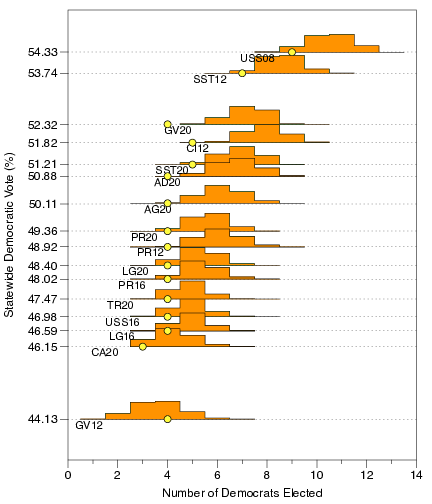We analyze the enacted North Carolina congressional plan (CST-13), the enacted North Carolina House General Assembly plan (SL 2021-175), and the currently proposed North Carolina Senate General Assembly plan (SST-13).
We compare these three districting plans with the ensembles we generated from non-partisan redistricting policies. See here for the congressional analysis and here for the general assembly analysis; these documents contain information on the non-partisan criteria considered along with the resulting ensemble of maps.

As an example, we look at the number of elected Democrats that would have occurred under a range of historic elections. Under each election, we compare the ensemble of non-partisan maps with the enacted map. The enacted congressional plan elects 4 Democratic representatives under a large range of statewide Democratic vote fractions. This level of non-responsiveness is not seen in the ensemble of plans.
For detailed analysis, see our reports:

